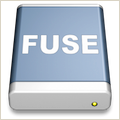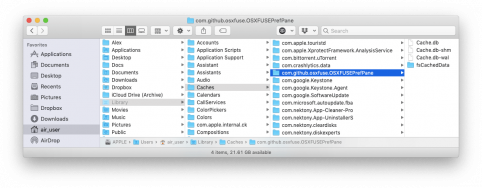

Have other people come across this? What would be the best course of action? Should I uninstall macFUSE and install OSXFUSE instead. I could try this but I think that would break my rclone install because the fix in 5373 requires you to install macFUSE at the same time as rclone. There's a possible fix proposed in #1654 that involves stripping out macFUSE and everything dependant on it and tapping gromgit/homebrew-fuse. The error message says that sshfs can't be installed because it needs macFUSE (which I already have installed) and that macFUSE is closed source. So I tried to install sshfs using brew and it won't install ( #1654). It appears that sshfs isn't included in macFUSE anymore. To do this conveniently, I want to connect to the VMs filesystem, and for that sshfs seems the obvious choice. I might also use it for playing with web development or spin up others for various projects where I have no clue what I'm doing and want to create an isolated environment. I want to use it for hosting a local copy of wordpress for my company website for experimenting on. I just installed ubuntu inside a UTM virtual machine. There's a workaround explained in this Git issue (#5373) That is, even if you have it installed before installing rclone, it won't be recognised and rclone mount won't work. If you've used homebrew to install rclone, you'll know that there's a dependency problem with macFUSE. I like using homebrew because I feel safer that I know how back things out and remove packages if I need to.

I also have an rclone mount set up, which I find very useful.Īs background, I installed rclone using homebrew. After typing it in, can you can then click “Return/Enter”.I use rclone to sync my NAS to an AWS compliant remote storage provider.
Disinstallare macfuse password#
This is the password that you use to login into your Mac with or that you would type in to make changes to your computer. Step 10: We then can enter our administrator password. To make sure that everything is removed, type in “Yes” here and then click “Return/Enter”. Step 9: When VirtualBox is installed onto your computer there is a FUSE package as well that is installed with it. We’re manually going to remove the app which is a good experience and the steps are really easy! We then have to type in the word “Yes” and click the “Return/Enter” button on our Mac keyboard. Step 8: The “Terminal” app will then launch and you will be presented with a command line like interface. We want to click “Open” here to continue. There will then be a message to confirm that you’re understanding that you’re launching an app that is not from the App Store and that it is not identified. Note: this is a one-time selection and your Mac will continue to keep the preferences you have above where it says “Allow apps downloaded from”. Step 7: once in Security & Privacy, we can select the “Open Anyway” option and allow the uninstaller tool to open. We then want to select “Security & Privacy”. Step 5 & 6: next, find system preferences on your dock and launch it. We can’t uninstall VirtualBox fully without allowing for this exception and we want it completely uninstalled. We’re going to have to tell our Mac to allow an exception for this one time (it will not change the setting permanently).
Disinstallare macfuse download#
However, the download is safe and can be trusted. This is simply because the file did not come from the Apple App Store. When you click on the “VirtualBox_Uninstall.tool” you may see the message above. We want to select the VirtualBox_Uninstall.tool in the lower right-hand corner of the screen to begin uninstalling the app from our Mac. Step 4: we will then be greeted with this window which has a couple of options in it. There will then be a window showing that the dmg is verifying itself and it will then automatically launch. Step 3: double-click the VirtualBox dmg file to launch the app. Step 2: click on the “Downloads” folder which is located under “Favorites”. Step 1: once the app has been downloaded, we want to launch Finder. You can download the app by clicking here which downloads the app from the MacUpdate website onto your Mac. If you’re unable to uninstall VirtualBox double-check that none of the steps below were missed as that could be the issue. We’re going to download the dmg to get access to the uninstaller tool. Using this method is more efficient than dragging the program to your trash as it will ensure that all files associated with VirtualBox are deleted from our Mac. Lucky for us, VirtualBox has an uninstaller tool that is built into the dmg (disk image) of the app that we’re going to use.

While you can do it that way, that won’t provide you with a clean uninstall of the app. Hai le porte aperte Ma ti serve continuamente Altrimenti conserva l’installer, quando serve lo monti e dopo lo disinstalli, è un attimo. Uninstalling VirtualBox requires a couple of extra steps rather than dragging the app to your trash. Devi disinstallare accuratamente Team Viewer, è pericoloso per qualsiasi intrusione.


 0 kommentar(er)
0 kommentar(er)
